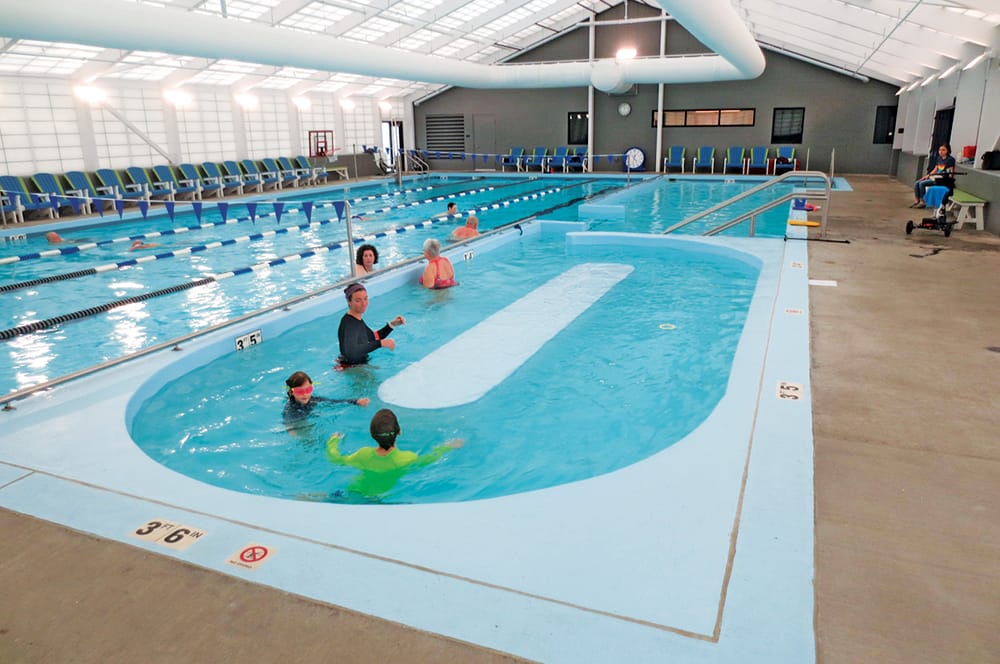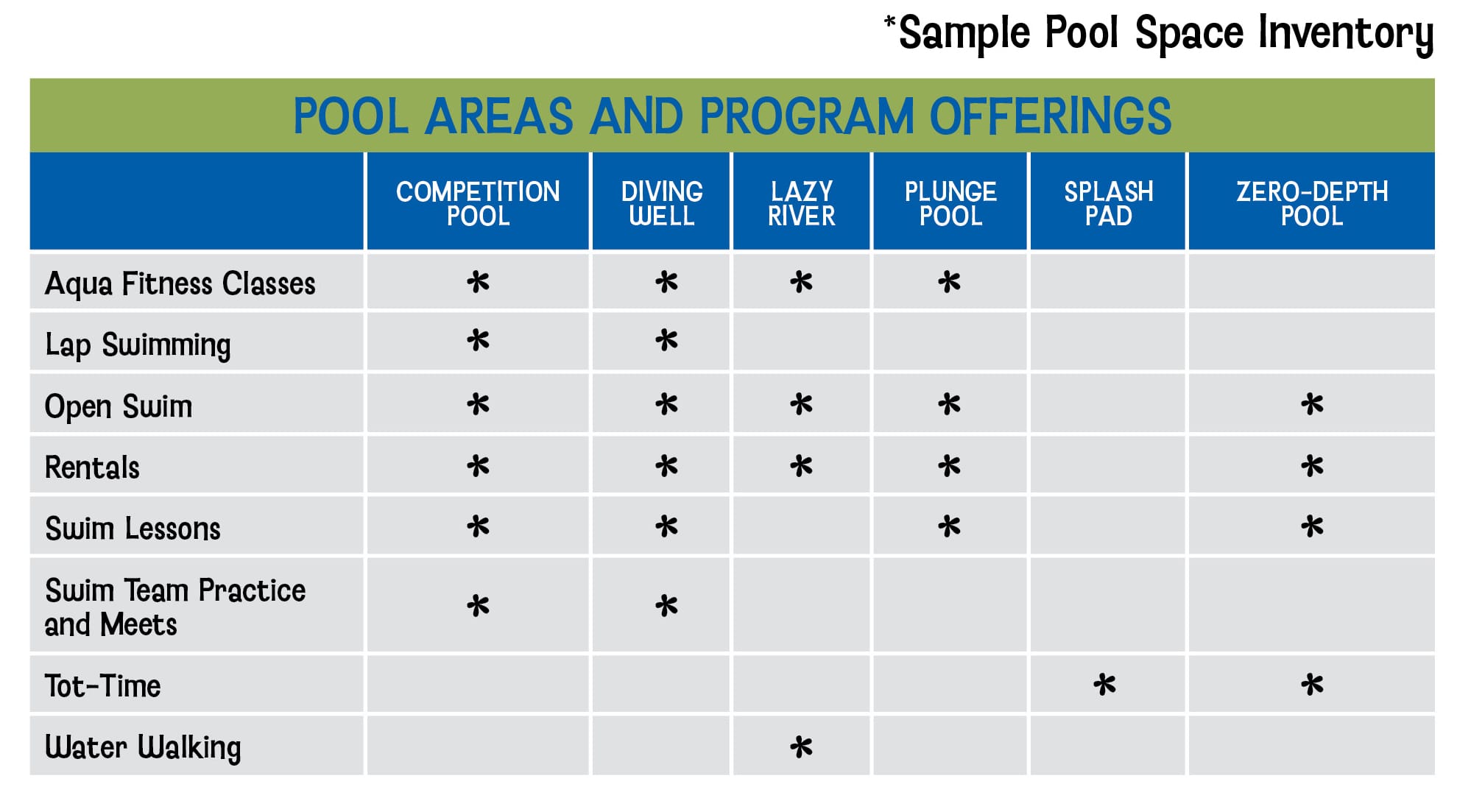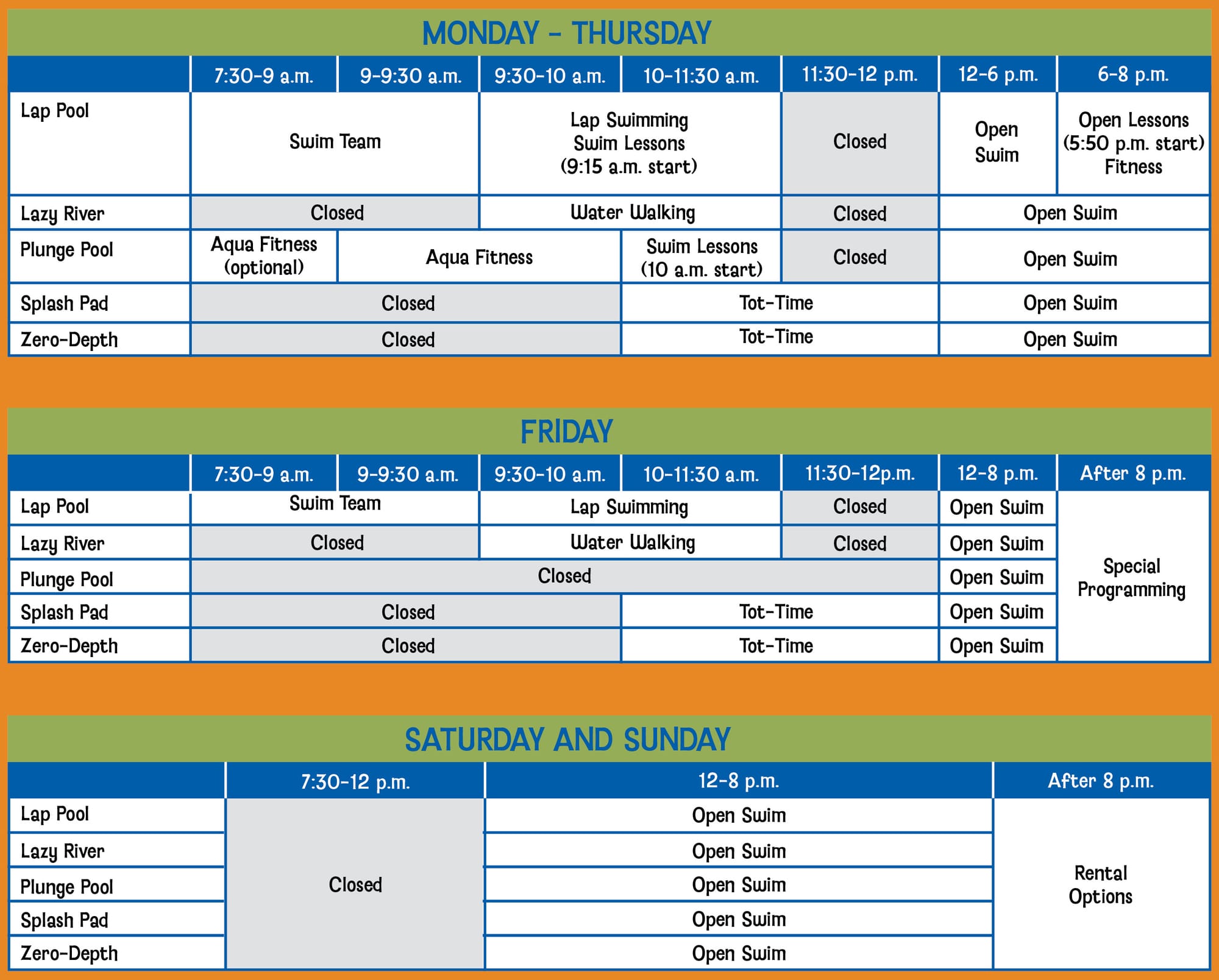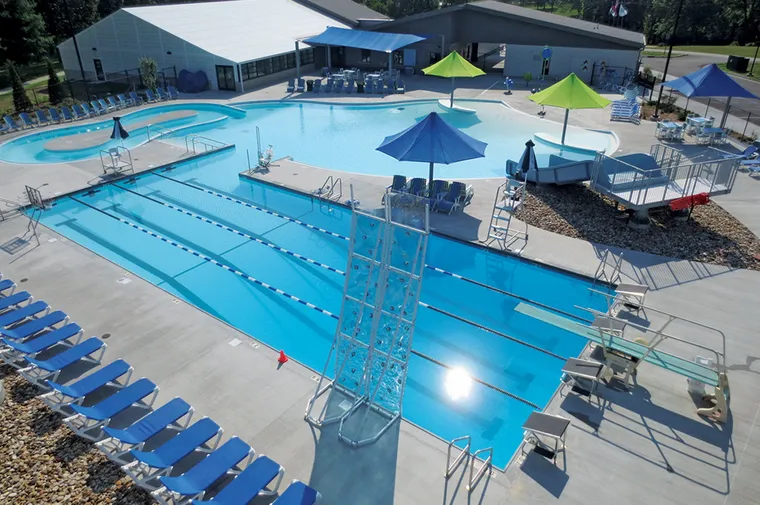Programming, planning, and projects are key ingredients in attracting user groups to swimming pools
By Lauren Ozburn
In the summer before I began middle school, I officially became an elder at the local pool that was within walking distance from my house. I probably consumed a dozen or more frozen Snickers as bribes by lifeguards who wanted to leave the pool on days too cold to remain open. My friends and I treated the pool like our home, and at least one of us would leave a towel to claim a seat for the next day. Teenage-lifeguard me would have been annoyed by pre-teen me.
Reflecting on my childhood, those days at the pool were the most enriching, carefree, and safe environment for me and my friends. Today, more than 25 years later, communities continue to offer spaces that foster childhood memories by strategically planning programs and amenities. It is never too early—or too late—to plan to maximize utilization of a facility.
Planning For Offerings
To get people through the door to a swimming pool, there must be a multi-functional space that meets their needs.
Ideally, a facility will have a mix of spaces and features that allow for progression of use as skills develop. The goal is to flip the use of space in a day and to have those spaces available as a user’s interest and needs change.
Determine the right features and programming by assessing who will use the pool and how it will be used, and then develop a plan that includes the appropriate depths, size of space, and amenities. After developing an initial plan, check for redundancies, for any opportunities to scale back, and for potential challenges. For example, if a successful program can be offered in six lap lanes vs. eight, save the space and costs associated with the extra two lanes and divert the resources to other needed spaces.
Tips:
- Identify the demographics to be served and how various groups will use a facility
- Inventory anticipated programs and their specific operating requirements (e.g., depths, preferred schedules, special requirements, features, equipment needed, etc.)
- Create a written narrative that compares user needs to space and budget parameters
- Consider the support spaces needed to offer a quality program
- Prepare the community for a lapse in program offerings while improvements are made.

Operational Business Planning
Opening a pool is not enough; it needs to serve a purpose for the diverse groups that use it. Developing an operational business plan is recommended in order to identify the challenges and opportunities that will occur naturally at a facility. A plan also provides an opportunity to compare a facility with others and adjust offerings to fit the needs of the community.
A usable business plan identifies the general operating conditions of a facility, including milestone dates (e.g., opening and closing dates, events, or scheduled maintenance), hours of operation, and the type and level of resources. A schedule of operation maps out opportunities for programming and utilization so the operators and the public know what to expect.
A plan not only provides strategic guidance but also is a functional tool in creating annual operating budgets and assessing facility feasibility.
Ensuring that an aquatic facility is efficient and financially sustainable, while being a cornerstone of parks and recreation services, has become an increasing standard. Actively maintaining this plan will assist in evaluating cost-recovery levels and in making targeted adjustments that meet agency goals.
Tips:
- Develop an inventory of the spaces and corresponding characteristics (e.g., square footage, length, depths, features in the space, etc.)
- Log the activities that are occurring per space, by hour, and by day (note: schedules may vary by day)
- Assess which activities are meeting operational goals and the groups that are (and are not) being served by those activities
- Identify the gaps; focus on finding solutions to maximize participation and usership
- Study the staffing resources needed and develop a plan to recruit and retain staff members
- Develop a comprehensive marketing and communication plan.
Sample Pool Space Inventory:

Sample Pool Schedule Inventory:

Keeping The Interest Alive
People like predictability, but they also like new amenities to maintain and recapture interest. There is often competition for recreational dollars, and because of this, agencies should plan for ongoing improvements to remain relevant. Improvements can be moderate, or they can be multi-million-dollar projects to be phased in or be in one big reveal. No matter the decision, assessing and refreshing a facility periodically is recommended.
Improvements that are easy to maintain, cost-effective, and noticeable to guests (like the addition of a climbing wall) vs. something hidden in a bathhouse are a good place to start. It may mean adding more shade, resurfacing the zero-depth or diving boards, or adding a basketball goal. Refreshing paint and landscaping, adding more deck chairs, or repainting restrooms are examples of moderate improvements that can increase user satisfaction and provide a new experience.
If adding revenue-generating opportunities to bring in new groups is a priority, rental areas or updated concession equipment may be added to expand the menu. Special events, promotions, or niche programs can be used to showcase a facility for people who may not otherwise visit.
Over time, residents may feel like a swimming pool works for them, but wish there was a big, unique feature. As newer and more modern facilities in the area are built, it can be expected that the community will want to update its facility. To address that concern, a distinguished amenity can be planned during the capital-development process. This might be a waterslide replacement or addition, an adjacent splash pad or play structure, or a universal restroom (or two).
Tips:
- Solicit and evaluate feedback and usage annually
- Look at options for change, assess the feasibility of the options, and submit budget requests proactively
- Create a multi-year maintenance and replacement plan, based on immediate, moderate, and long-term needs
- Think about making modifications, large or small, every 5 to 10 years to maintain interest.
From my pre-teen vantage point, I saw workers going in and out of the pool before it opened, and I was concerned about what they were doing to my sanctuary. When I arrived on the first day of the season, to my surprise, one of the one-meter diving boards was swapped out with a drop slide, a shade structure was erected next to the concession stand, and the pool was even better than in the previous summer. Right before my eyes, the facility had transformed into a summer destination for my entire neighborhood. My friends and I made new childhood memories with the thrill of the slide, and more families socialized under the shade canopy during the lunch hour. Our experiences were enhanced, and more people flocked to the pool because the city had studied how the facility could better serve us well before I showed up with my daily allotment of bagged sandwiches and sunscreen.
Lauren Ozburn is a former lifeguard, instructor, and aquatic supervisor. She is now an aquatic consultant for Waters Edge Aquatic Design, Kansas City, Kan., and helps communities throughout the Midwest plan for new and renovated aquatic facilities. Reach her at lozburn@wedesignpools.com.

